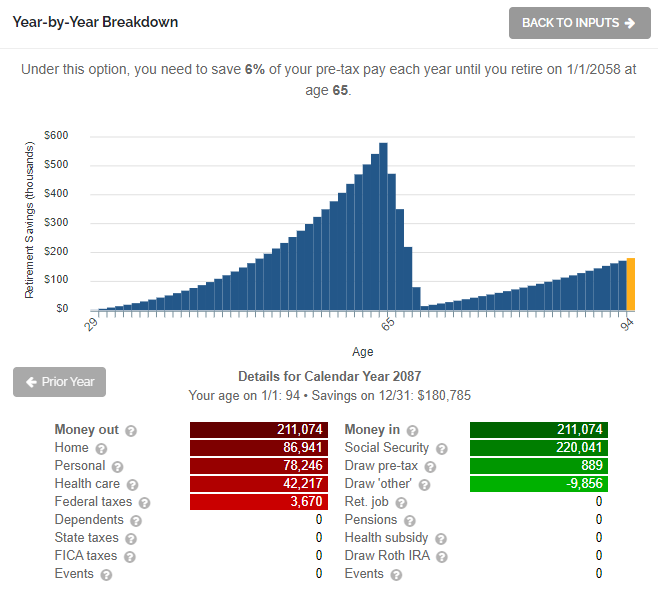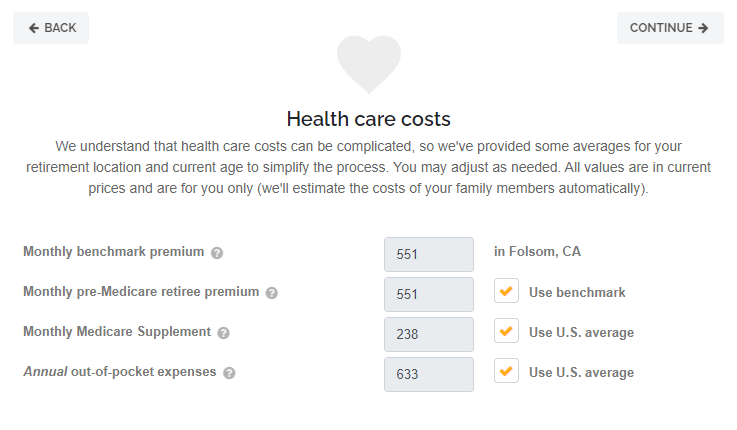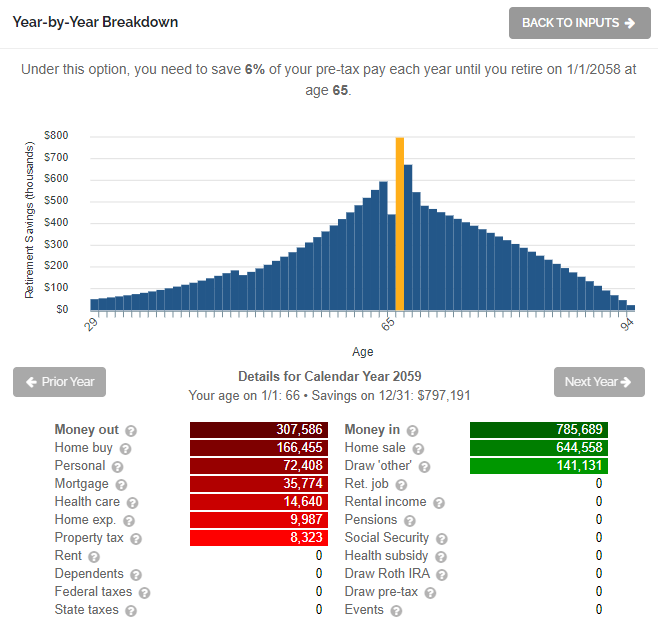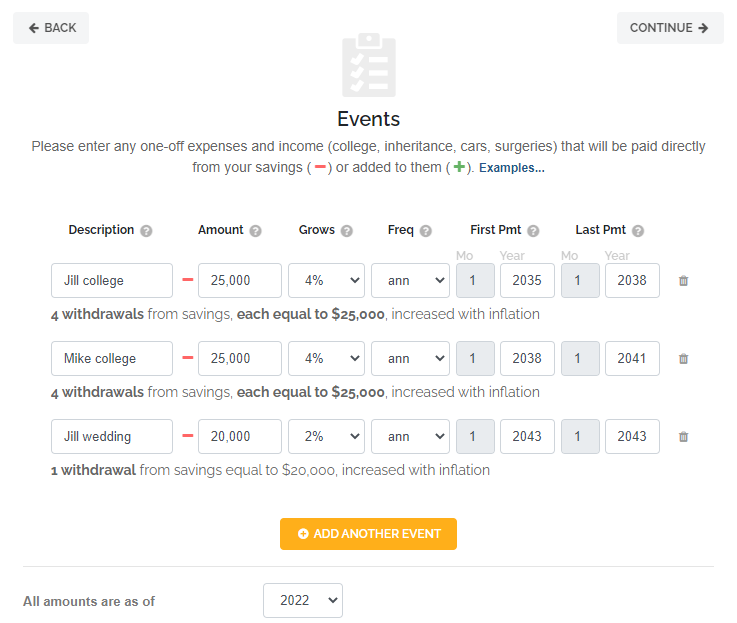Is Inflation Properly Reflected In Your Planning?
Financial aspects don’t grow at the same rate. In this post, we use MoneyBee to illustrate a more thoughtful approach to inflation.

We can't afford to ignore inflation when planning for retirement, nor can we afford to ignore its many variations. Equally, you shouldn't have to be an economist to use a retirement calculator that properly reflects inflation. This post goes over a few examples using MoneyBee to show it is possible to take a detailed approach to inflation without overwhelming the user. MoneyBee automates some of the more complex aspects (like age inflation in health premiums) and provides research-based defaults for all other types of inflation.
Inflation and Social Security Benefits
There are many variables that go into your Social Security calculation and they should all be projected with an appropriate rate. One of these variables is your future wages. MoneyBee's default assumption is that your earnings will grow with the average wage growth assumed by the Social Security Administration (SSA) in its economic projections. You can of course change that assumption to better fit your own situation and expectations.
Apart from wages, MoneyBee automatically uses the SSA's long-term assumptions for the rest of the variables that go into your Social Security benefit calculation. These assumptions are selected by some of the best economists and actuaries in the country, and are based on extensive data and research.
Once you start collecting your benefits, they are expected to grow with annual cost-of-living adjustments. MoneyBee uses the SSA's long-term assumptions for this part too.
The end result is that multi-variate inflation is reflected in one of the most important financial aspects in retirement with minimal inputs from the user. No economic expertise is required.
Why does it matter? Consider a 30-year-old making $60,000 a year in 2022. If they retire at 65 and claim their benefits at 70, MoneyBee calculates a Social Security retirement benefit of $125,000 at age 70. This grows to $220,000 by age 95.


Using a current dollar approach, where all variables that go into the Social Security calculation are kept constant, we get $34,000 per year at both ages 70 and 95. This is the basis used in your Social Security statement. While this number is helpful in understanding your benefit's purchasing power, it is not the right basis in the context of retirement planning.
Are these projected numbers realistic? Of course they are. Keep in mind that all other financial aspects, from investments to living expenses, are also projected to increase manifold over the same period of time. Your financial picture in retirement will be distorted if some values are projected and some are not, or if each aspect is not projected on its own merits.
Inflation and Health Care Costs
Health care costs can also be very complex to forecast. They have many components each of which follows its own unique inflation trend. Luckily, MoneyBee was built by actuaries who do these kinds of projections for a living. MoneyBee automatically breaks down your health care costs into their components and projects each component with research-based assumptions, which are updated annually based on the latest available data.
If needed, users can override the current values of these costs, which are defaulted to national averages and health insurance premiums from local health insurance exchanges.

Users can also override the medical price trend, but cannot override the age inflation curve. This curve is derived by our actuaries each year based on the latest health insurance premiums from your local health insurance exchange. MoneyBee uses a different age inflation curve for different users depending on where they plan to retire.

Note that since health care costs vary by age inflation as well as price inflation, MoneyBee projects these costs separately for each partner when used by a couple.
Inflation and Taxes
MoneyBee automatically builds in an approximate estimate of taxes in each year after retirement. And since it projects incomes, it needs to project all tax brackets as well. Otherwise, users will drift into higher income tax brackets over time, even though their income remains average in each future year.
We should note, however, that adjusting the tax brackets with inflation has a far smaller impact on our overall retirement planning. The key reason for this is that for most of us a significant portion of our retirement income will come from Social Security, which is only partially taxed at federal level and not taxed at all in most states. Also, based on our default assumptions, our health care costs are expected to grow much faster than other financial aspects. This means that our itemized deductions are likely to exceed our standard deduction at some point, further reducing our taxable income. Indexing the tax brackets for many of us comes down to how much of our retirement income will be taxed at 10% versus 12% for federal tax purposes.
Let's illustrate this using our 30-year-old example. Here's again their cash flow in year 2087:

Note that their federal tax in that year is only $3,670. How is this possible when their Social Security benefit is projected to be $220,000 in that year? Well, only less than $70,000 of this benefit is projected to be taxable at federal level based on the current formula outlined in Publication 915 (none of it is taxed in New York state, where we assume they will retire). Since their medical expenses are projected to be $42,000 in that year, their itemized deduction comes out at around $37,000. Their taxable income ends up at around $33,000, which falls in the first two federal tax brackets (the 10% and 12% rates), regardless of whether we indexed the brackets or not. This means that not indexing the brackets would have made less than $60 difference for the entire year of 2087!
Inflation and Housing Expense
Housing is usually our biggest expense both before and after retirement. Projecting it forward as accurately as possible is critically important. Here, too, we have several moving parts, each evolving differently over time.
Mortgages in the U.S. are usually fixed-rate, so your mortgage payments should not be increased with inflation and should be stopped when your mortgage is paid off.
Property taxes work differently in different states and counties, but can generally be expected to grow with the real estate inflation in your area. Note that real estate inflation may differ significantly from general inflation. Also, while your mortgage payments may end before you retire or a few years thereafter, property taxes will likely be with you for the rest of your life.
Rent you pay or receive will probably also grow with the real estate inflation in your area.
Home improvements and maintenance expenses will likely grow with general inflation.
MoneyBee breaks down your housing expense in all these components and projects each separately, including the financial impact of home purchases and sales:

Inflation and One-Off Expenses
One-off expenses and income, or "events" as we call them in MoneyBee, can have a significant impact on our retirement planning. The most common among them, such as college expenses and weddings, are large enough to affect the timing of our retirement or our desired lifestyle in retirement. And if these events are far enough into the future, they also need to be projected with inflation.
MoneyBee allows you to specify both the expected timing of these events and the inflation rate associated with each one of them:

The couple in the above example expects college costs to continue to skyrocket between now and the time their kids enroll.
Many economists warn that the rate at which college and health care costs are currently growing is unsustainable. Historically, such aggressive price growth has always opened the door for innovation and reform, which has brought prices down to more normal levels. This, however, is just speculation. Those changes may or may not happen and, when it comes to retirement planning, it's better to be prepared for the worst, while still hoping for the best.
Conclusion
If a retirement calculator projects our savings with investment return, it absolutely must also project all other financial aspects with an appropriate, data-driven assumption. Social Security, health care and housing - three of the largest items in retirement planning - each consists of multiple components with their own unique growth trends. Large one-off expenses may warrant their own growth rate too. While projecting tax brackets with inflation may have a smaller impact for most of us, failure to do so may result in large inaccuracies in some cases.
MoneyBee follows these recommendations to provide you with a more thorough approach to inflation in your retirement planning.